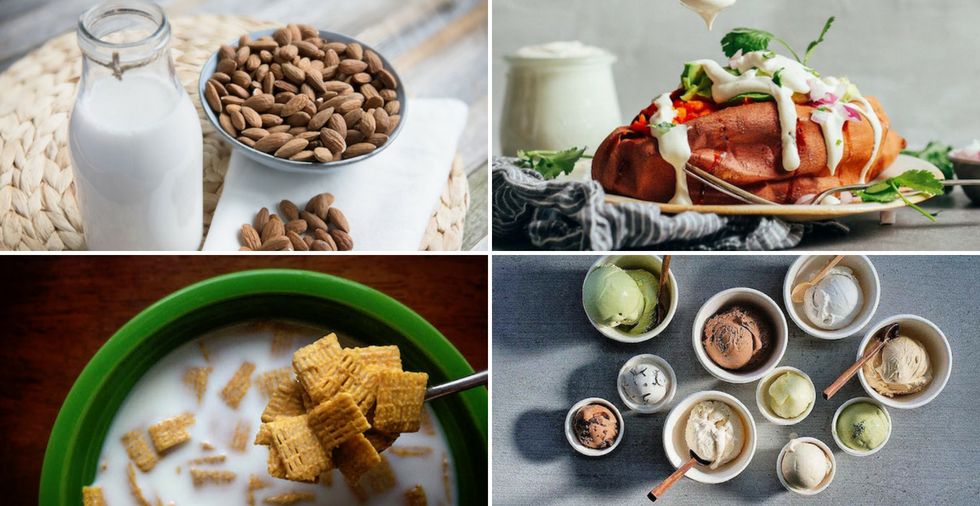Adopting a dairy-free diet may feel like a challenge at first, but with the right swaps, it’s entirely manageable—and can even open the door to a more varied and enjoyable eating experience. Whether you’re avoiding dairy for health reasons, dietary preferences, or ethical considerations, you don’t have to miss out on the flavors and textures you love. From creamy substitutes to nutrient-packed alternatives, these swaps will help you maintain your nutritional needs while supporting your lifestyle choices.
Milk Alternatives for Every Taste
One of the first adjustments in a dairy-free diet is finding a replacement for cow’s milk. Luckily, there’s no shortage of options. Almond milk, oat milk, and soy milk are among the most popular choices. Almond milk offers a light, nutty flavor, making it perfect for smoothies and coffee. Oat milk is creamier and works well in baking or poured over cereal. If you’re seeking a protein-rich option, soy milk is an excellent choice. For those with nut allergies, rice milk or hemp milk provide safe, nutrient-dense alternatives. Experimenting with different types can help you find the one that best suits your taste and dietary needs.
Cheese Without Compromise
Cheese lovers often find it hard to give up their favorite food, but dairy-free options have come a long way. Nutritional yeast, often referred to as “nooch,” is a versatile ingredient that mimics the savory, umami flavor of cheese. Sprinkle it on popcorn or pasta for a cheesy kick without the dairy. For more traditional substitutes, brands like Daiya, Violife, and Miyoko’s Creamery offer plant-based cheeses that melt and stretch just like the real thing. Cashew-based cheeses are particularly creamy and pair beautifully with crackers or in dips.
Yogurt and Cream Replacements
Yogurt is a staple in many diets, whether as a breakfast option, snack, or base for smoothies. Thankfully, there are plenty of dairy-free yogurts made from almond, coconut, or soy milk. These alternatives come in a variety of flavors and often include probiotics to support digestive health. For cream-based recipes, coconut cream is a standout option—it’s rich, versatile, and works in soups, curries, or whipped as a dessert topping. Cashew cream is another great choice, offering a silky texture that can enhance savory or sweet dishes.
Butter Substitutes for Cooking and Baking
Butter plays a central role in many recipes, but it’s easy to replace with dairy-free options. Plant-based margarine or spreads, such as Earth Balance, can be used as a one-to-one swap in most recipes. For a more natural option, coconut oil or olive oil can provide richness and flavor. In baking, applesauce or mashed banana can be used to maintain moisture while adding a subtle sweetness to your treats. Avocado is another unique option for spreads or baking, bringing creaminess along with a dose of healthy fats.
Dairy-Free Ice Cream and Desserts
Ice cream is often seen as a non-negotiable indulgence, but you don’t have to skip dessert when avoiding dairy. Dairy-free ice creams made from almond, coconut, or oat milk are widely available and come in an array of flavors. Brands like Ben & Jerry’s and So Delicious offer decadent options that rival traditional ice cream. For a homemade twist, try blending frozen bananas with a splash of almond milk for a creamy, naturally sweet dessert. If you’re into baking, look for recipes that use dairy-free chocolate chips or substitutes like carob.
Protein Sources Without Whey
Whey protein is a common ingredient in protein powders and bars, but there are plenty of dairy-free alternatives to support your fitness or nutritional goals. Pea protein, rice protein, and hemp protein powders are excellent options for smoothies or post-workout shakes. For whole-food sources, tofu, lentils, and quinoa are all rich in protein and easy to incorporate into meals. Many plant-based protein bars are also available, ensuring you can maintain your energy on the go.
Embracing a Dairy-Free Lifestyle
Transitioning to a dairy-free diet doesn’t have to feel restrictive or overwhelming. By incorporating these swaps, you can continue to enjoy the meals and flavors you love while supporting your dietary preferences. The growing availability of dairy-free products means you can maintain variety and excitement in your meals, whether you’re cooking at home or dining out. Remember, small adjustments can lead to significant changes in how you feel, making the effort worthwhile. In addition to incorporating these dairy-free swaps, some individuals turn to supplements like Cellsentials, which are designed to support general health maintenance and well-being as part of a balanced lifestyle.
Living dairy-free is an opportunity to explore new ingredients and expand your culinary horizons. With these swaps, you’ll find that maintaining a satisfying and balanced diet is easier than you think. Whether you’re experimenting with cashew cheese or perfecting a recipe with coconut cream, each step brings you closer to a sustainable, enjoyable lifestyle.







